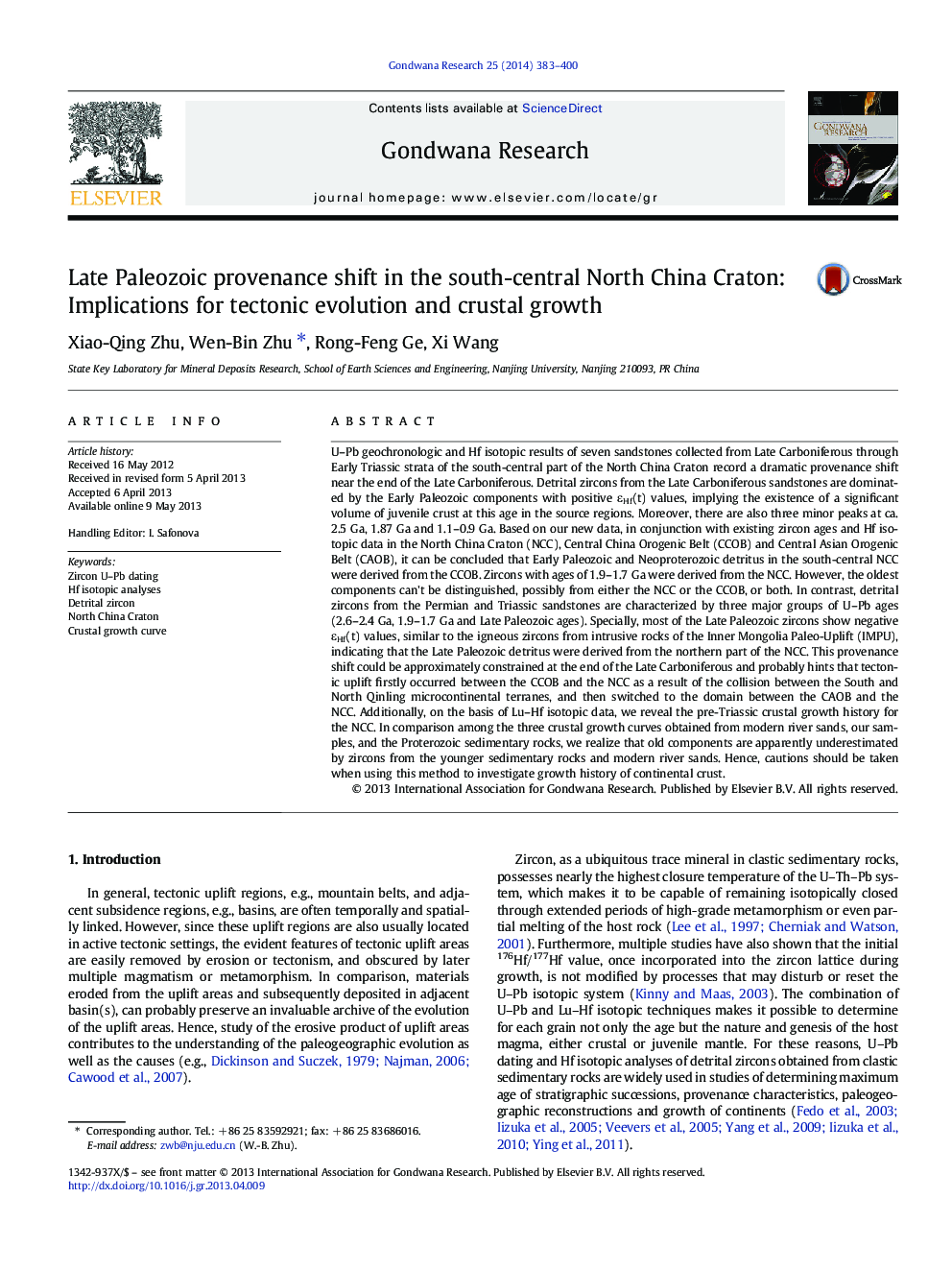| Article ID | Journal | Published Year | Pages | File Type |
|---|---|---|---|---|
| 4727135 | Gondwana Research | 2014 | 18 Pages |
•U–Pb–Lu–Hf of detrital zircons from the south-central part of the NCC is presented.•A dramatic Late Carboniferous provenance shift was recorded by detrital zircons.•Old crustal components are underestimated for growth model based on young sediments.
U–Pb geochronologic and Hf isotopic results of seven sandstones collected from Late Carboniferous through Early Triassic strata of the south-central part of the North China Craton record a dramatic provenance shift near the end of the Late Carboniferous. Detrital zircons from the Late Carboniferous sandstones are dominated by the Early Paleozoic components with positive εHf(t) values, implying the existence of a significant volume of juvenile crust at this age in the source regions. Moreover, there are also three minor peaks at ca. 2.5 Ga, 1.87 Ga and 1.1–0.9 Ga. Based on our new data, in conjunction with existing zircon ages and Hf isotopic data in the North China Craton (NCC), Central China Orogenic Belt (CCOB) and Central Asian Orogenic Belt (CAOB), it can be concluded that Early Paleozoic and Neoproterozoic detritus in the south-central NCC were derived from the CCOB. Zircons with ages of 1.9–1.7 Ga were derived from the NCC. However, the oldest components can't be distinguished, possibly from either the NCC or the CCOB, or both. In contrast, detrital zircons from the Permian and Triassic sandstones are characterized by three major groups of U–Pb ages (2.6–2.4 Ga, 1.9–1.7 Ga and Late Paleozoic ages). Specially, most of the Late Paleozoic zircons show negative εHf(t) values, similar to the igneous zircons from intrusive rocks of the Inner Mongolia Paleo-Uplift (IMPU), indicating that the Late Paleozoic detritus were derived from the northern part of the NCC. This provenance shift could be approximately constrained at the end of the Late Carboniferous and probably hints that tectonic uplift firstly occurred between the CCOB and the NCC as a result of the collision between the South and North Qinling microcontinental terranes, and then switched to the domain between the CAOB and the NCC. Additionally, on the basis of Lu–Hf isotopic data, we reveal the pre-Triassic crustal growth history for the NCC. In comparison among the three crustal growth curves obtained from modern river sands, our samples, and the Proterozoic sedimentary rocks, we realize that old components are apparently underestimated by zircons from the younger sedimentary rocks and modern river sands. Hence, cautions should be taken when using this method to investigate growth history of continental crust.
Graphical abstractFigure optionsDownload full-size imageDownload as PowerPoint slide
